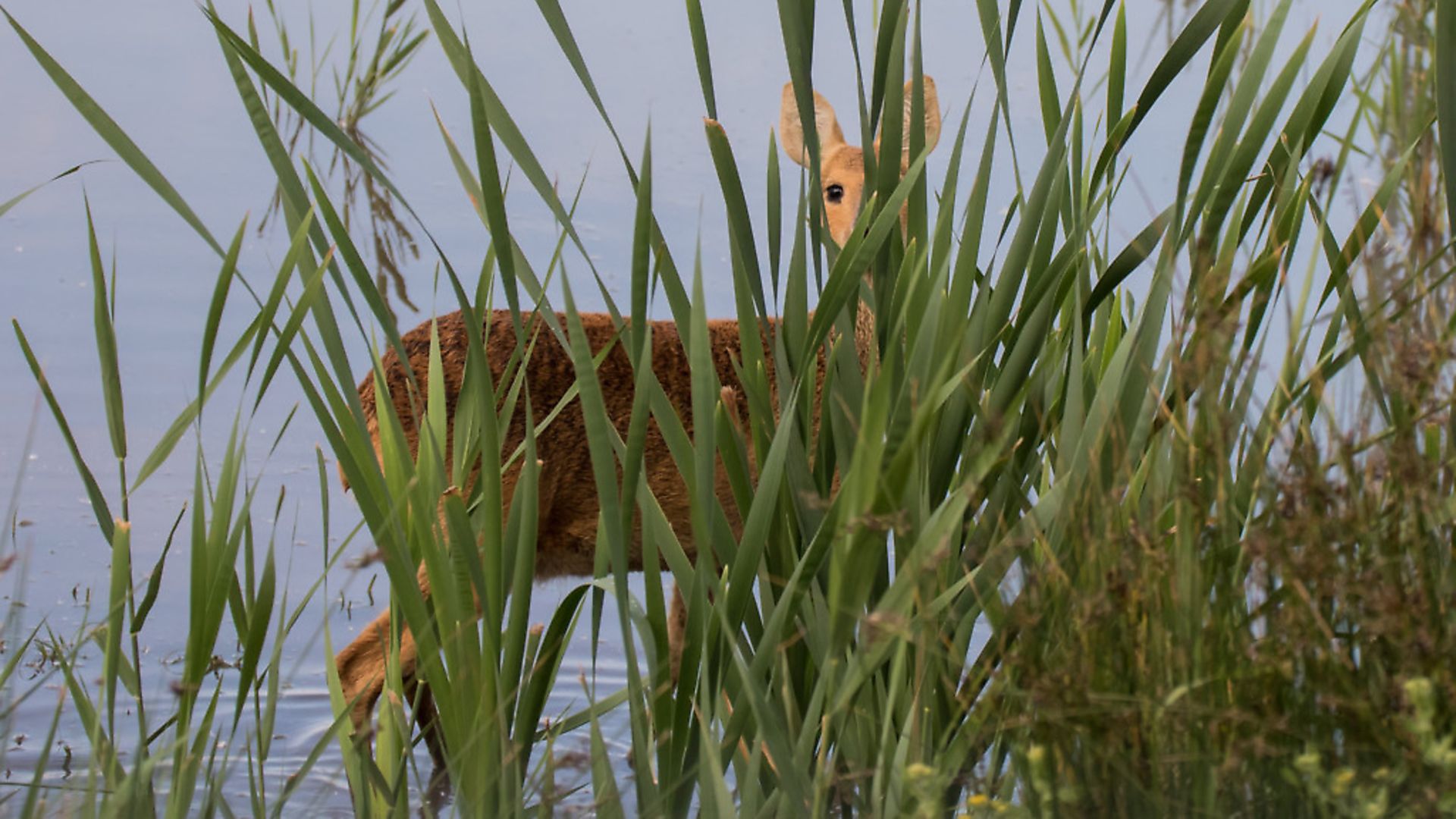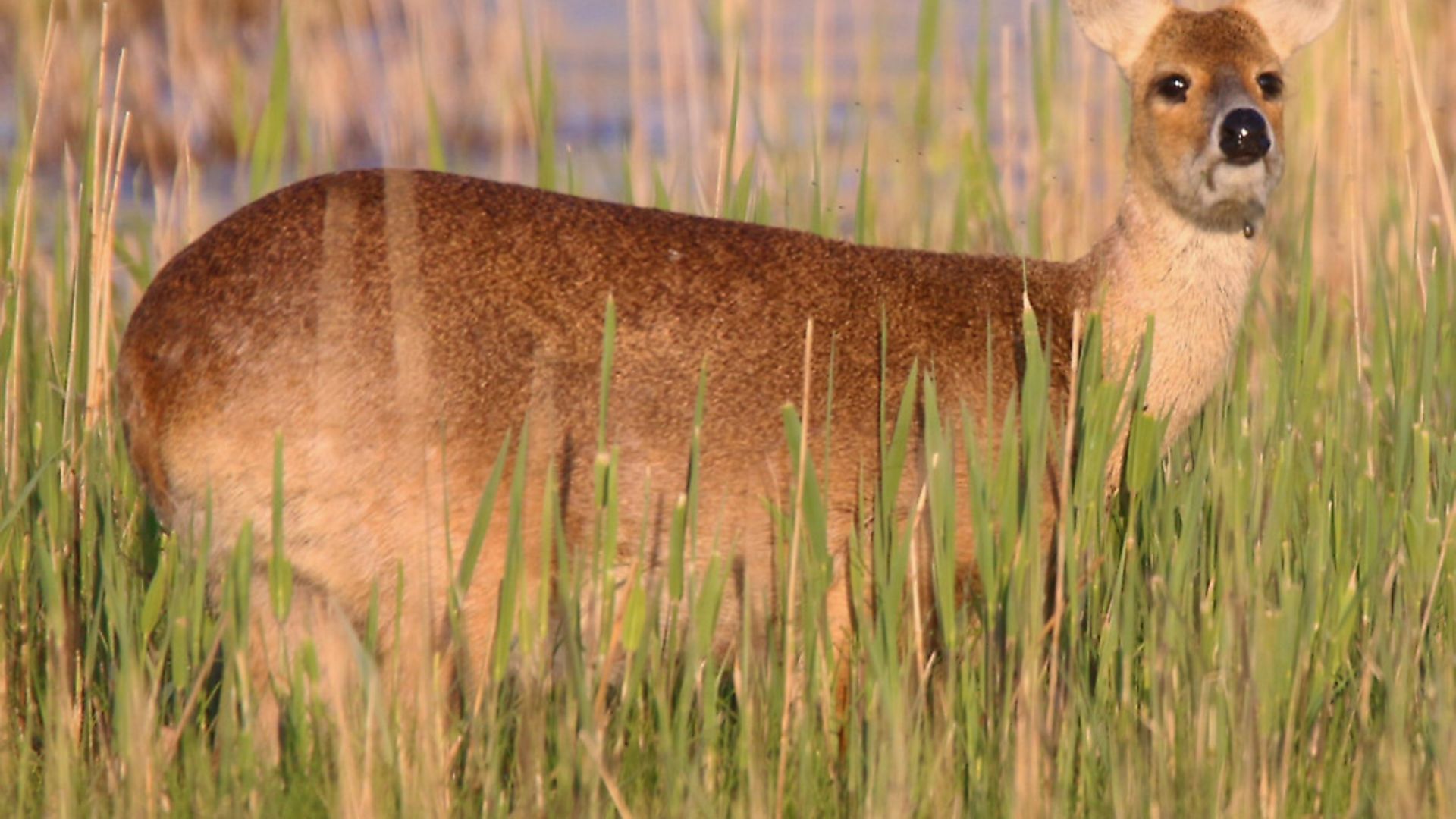Everything you need to know about Chinese water deer (CWD), including habitat, appearance, behaviour, breeding/reproduction, and the legal shooting seasons
 credit: Archant
credit: Archant
SPECIES HISTORY, POPULATION AND DISTRIBUTION
Chinese water deer (CWD) is a small species native to China and Korea. In the late 1800s/early 1900s, CWD were introduced to Woburn Abbey Deer Park in Bedfordshire, with a small population transferred to Whipsnade Zoo (also in Bedfordshire) around 1930. Further introductions to parks throughout the country followed, including parks in Norfolk, Hampshire, Yorkshire and Shropshire, and today’s population is a result of escapes and deliberate releases.
The UK population of CWD today is estimated to be around 2,100, a relatively low figure compared to that of the other UK species. Compared with the estimated population of muntjac deer (40,300), which were introduced to the UK around the same time, it would suggest that the conditions in this non-native country are far from ideal for successful CWD breeding; the absence of populations in Hampshire, Yorkshire and Shropshire also suggest this, as the earlier escapees seem to have died out. Nevertheless, they have established populations across south-east Britain with strongholds in Bedfordshire, Norfolk and Cambridgeshire, and a scattered spread showing to the South West. The population here in the UK accounts for an estimated 10% of the total world population.
Though they are not considered under threat in the UK, the CWD is on the IUCN red list as ‘vulnerable’, with habitat loss and poaching stated as two possible reasons for the population decline seen in its native countries.
 credit: Archant
credit: Archant
APPEARANCE AND BEHAVIOUR
CWD are small in stature, with both sexes reaching a maximum height of around 50-55cm at the shoulder, and weighing in at around 11-18kg. They have large ears and a dark nose, giving them a teddy bear-like face. Their coat is russet brown for most of the year, changing to a duller grey in the winter months. They are uniform in colour, with no distinguishing markings on the rump with which to identify them. They sport a short tail and are the only UK species of deer with no antlers on either the males or the females. Similarly to muntjac deer, both sexes sport tusks, which are large and protruding on the males, and smaller and less visible on the females; this, coupled with their slightly hunched appearance, can mean they are often mistaken for muntjac, being only marginally larger in size. Like muntjac, it is also considered a primitive species, because tusks evolved prior to antlers as a form of defence.
Of all the UK species, Chinese water deer are thought to cause the least damage to gardens and crops. They are quite selective feeders and prefer to take small amounts of nutritious plants, especially herbs, but similarly to other deer species they will adapt to their habitat, to a certain extent, and are also known to browse on a wide variety of vegetation, woody plants and grasses. As their name suggests, they prefer wetter habitats such as reed beds, lakes and riverbanks, and are excellent swimmers (they can sometimes also be found in areas where there is well-developed low-level vegetation).
CWD are solitary animals, except when mating and when found in very high density, when pairs or small groups may be found. They are active throughout the 24-hour period, with more activity at dawn and dusk. As with most species, they will spend long periods of time ‘lying up’ to ruminate after feeding. Both sexes make a barking sound when alarmed.
THE RUT AND REPRODUCTION
Like other species, CWD bucks will perform parallel walks with rival bucks during the rut, and will resort to fighting using their tusks if the pecking order is not established during the more passive show of dominance. Bucks and does will form pairs during November and December and jointly defend their territories, before parting ways in April. Bucks are particularly aggressive and will not tolerate others in their territories, yet fatalities resulting from CWD fights are much rarer than with the antlered species. Bucks make a distinctive ‘whickering’ noise – a rapid chattering – when chasing off competition. During courtship both sexes will make whistling and squeaking noises, and both sexes will scream when being chased.
Does will give birth to between one and three fawns from May to July, when conditions are best for the young to thrive, following a six- to seven-month gestation period. They can produce up to six fawns but this is very unusual.
Despite their ability to produce multiple young, there is a high mortality rate, with around 40% of fawns dying within the first four weeks. Again similarly to other species, the young will be left concealed in cover and will only emerge to suckle from their mothers; lactation lasts for several months.